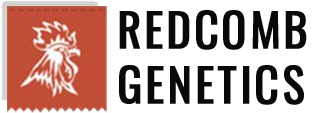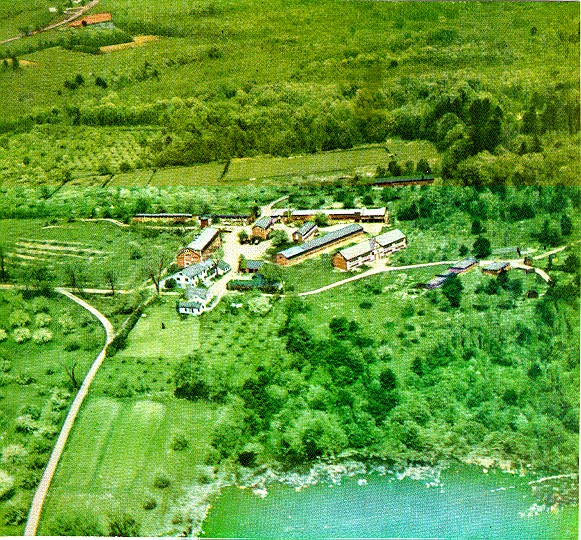In 1916 Robert C Cobb after finishing one year at the Harvard Business School decided to go into farming rather than start a career in business. He borrowed money from his father and purchased the Old Pickard Farm in Littleton 25 miles west of Boston. It comprised 167 acres with a homestead of 10 rooms, 450 fruit trees and 200,000 pine trees ready-to-cut, 16 cows, two bulls, three horses, pigs but no poultry. Although he read extensively about farming and poultry and attended Extension courses under the auspices of the Massachusetts Agricultural College at M.I.T., did not know much about farming. So, after a month of blistered hands and aching body, he repaired to the Massachusetts Agricultural College at Amherst to attend the so-called winter (of 1916-1917) ‘10 weeks course’. The road to poultry breeding was started when he received a gift of two Barred Rock pullets. The Barred Rock flock expanded and under a Code of Practice within the Massachusetts Certified Poultry Breeders’ Association Robert Cobb had a code to work to. The performance of the Barred Rocks steadily improved and in 1929 his entry into the Storrs Agricultural Experiment Station 18th Egg Laying Contest won with a World’s Record of 272 eggs per bird. With almost 7,000 hens he was the world’s largest breeder of Barred Rocks. Next Rhode Island Reds were added to the breeding program and after several years of improvement they were crossed with the Barred Rocks to produce the famous “Cobb-O-Link”. As time progressed in the 30’s the farm passed 1 million breeders per year in sales and the farm was recognised as one of the most important pioneers of egg breeding.
However changes were taking place in a side-line business of selling unwanted males for the meat trade. Breeding techniques to improve the meat-type strains were being adopted and Robert Cobb recognized the opportunity to change direction. He purchased flocks of New Hampshires and White Plymouth Rocks. Change came rapidly after World War 2 when the consequences of the two “Chicken-of-Tomorrow” contests were realized in the broiler markets. Cobb was reluctant to expand his White Rock breeding operation to a national size. But by 1956 his competitive position was so favourable that be began selling the Cobb broiler breeding stock nationwide. He then began to look seriously at the world markets and in Europe while the market for egg breeding was well developed there was a strong demand for meat birds waiting to be tapped. He developed the Cobb Cornish male for mating with the Cobb White Rock pullet to give overseas customers the package they wanted. In 1959 egg breeding was stopped and the business was solely sale of broiler breeding stock. Cobb breeding stock was introduced to the UK in 1961 through the enterprise of the Anglian Hatcheries Ltd duo of Peter Beck and John Knowles. The first broilers were available in January 1963; it was through the first legal importation achieved by quarantining a generation in Sweden before moving the progeny to England. The Cobb Breeding Company in the UK became the source of the European Cobb stock. Ventures developed in Argentina, Philippines, Thailand, Hong Kong, Brazil, Peru, Venezuela and Ireland. The opening of a hatchery in Siloam Springs, Arkansas in 1961 was the key to moving the whole breeding operation to that state which was the main broiler growing state.
Robert C Cobb Jr was elevated to the Presidency of the company in 1963 with Cobb Sr taking the role as Chairman of the Directors. Robert Cobb Sr also completed his autobiography in 1966 “Man Shall Not Live By Bread Alone” recounting the 50 years of poultry breeding. In 1966 the European companies of Cobb subsidiaries of the Anglian Hatcheries Ltd agreed to a merger with the Cobb Breeding Corporation of the U.S.A. The development of the Cobb 100 in the US was followed by a meatier bird in the UK the Cobb 500. This was to satisfy a demand for a superior conformation and high meat yield. Cobb was purchased by The Upjohn Company in 1974 expanding Upjohn’s agribusiness operations, and coincidently the same year that Tyson Foods Inc. purchased the Vantress breeding lines. In 1986 Tyson and Upjohn form Cobb-Vantress Inc as a joint venture. In 1994 Tyson Foods acquired 100% of Cobb’s share holding from Upjohn thus making Cobb and the Cobb European companies wholly-owned subsidiaries of Tyson Foods Inc.


